Achieving Diplomate status of the International Board of Environmental Risk Assessment (IBERA) demonstrates superior experience and knowledge in all aspects of environmental risk assessment (ERA). Applicants must demonstrate experience through employment in the field, education, and knowledge, the latter through successful passing of an exam. The criteria on the exam was determined through a rigorous job analysis of experts in ERA where either knowledge, comprehension, application, analysis, synthesis, or evaluation levels of difficultly were associated within various knowledge domains for ERA. Knowledge domains and subdomains can be found here and are listed below.
There are many references that include regulatory guidance that can be found here for further study. Currently, there is no single preparation course available to assist with studying for the exam.
Diplomates are also expected to demonstrate continuing education in the field to maintain Diplomate IBERA status. Diplomates must recertify every five years where evidence of continuing education in the form of additional coursework, attendance at scientific conferences, contributions to the scientific field in the form of authorship, presentations, and abstracts will be considered. A minimum amount of continuing education credits (CEs) will be needed to successfully recertify.
DOMAIN 1: Environmental risk assessment concepts, principles, and legislative frameworks
- Differentiate between the components of the risk assessment paradigm: hazard–exposure–risk.
- Differentiate between prospective, retrospective, and alternatives risk assessment.
- Assess the utility and limitations of controlled laboratory, field, and epidemiological studies.
- Distinguish the value of modelling, observational and experimental studies to assess risk
- Evaluate data across spatial, temporal and biological scales of effects.
- Evaluate chemical groups and classes (e.g., QSAR, mode of action, chemical physical properties).
- Identify risk assessment approaches under various regulatory frameworks (e.g., REACH, TSCA, CSCL).
- Identify similarities and differences between human health and ecological risk assessments.
- Identify applicability of weight of evidence approaches.
- Identify the role of uncertainty analysis.
DOMAIN 2: Fate and behavior of chemicals
- Assess environmental conditions, processes, and chemical properties driving chemical fate, behavior, and transport.
- Assess environmental conditions and chemical properties driving chemical distribution within compartments: partitioning, and speciation.
- Assess environmental conditions, processes, and chemical properties driving chemical transformation and degradation.
- Identify approaches for measuring or estimating chemical fate and transport (e.g., in-silico predictions, empirical measurements and their relationships, and experimental.
DOMAIN 3: Exposure assessment and estimation of chemicals in the environment
- Evaluate the extent and magnitude of environmental release sources.
- Apply principles of sampling design.
- Assess the quality, value, and reliability of analytical data of chemicals in different compartments (e.g., clean sampling, blanks, detection limits).
- Evaluate the strength and relevance of exposure information.
- Utilize monitoring information and evaluate their quality and usefulness for exposure assessments.
- Estimate internal exposure and downstream consequences (e.g., bioaccumulation, biomagnification, food chain transfer, secondary poisoning).
- Recognize environmental conditions and chemical properties affecting bioavailability and bioaccessability.
- Evaluate pathways of exposure (e.g., food chain transfer, secondary poisoning).
- Recognize the utility and limitations of models used to estimate or predict exposure (e.g., individual-based spatial exposure models, food web models, fate and transport.
DOMAIN 4: Sub-organism level ecotoxicology
- Demonstrate understanding of uptake, biotransformation, detoxification, bioactivation, elimination pathways (e.g., ADME).
- Identify the influence of chemical and organismal properties and environmental conditions on ADME.
- Recognize different types of interactions of chemicals with biomolecules (i.e. molecular initiating event).
- Assess the utility and limitations of toxicity pathways, mode of action, and/or adverse outcome pathways.
- Demonstrate understanding of the development and application of commonly used biomarkers (e.g., metallothioneins, EROD) together with their possibilities and limitations.
- Utilize data from next-generation high throughput methods (e.g., transcriptomics, metabolomics, proteomics, receptor binding/activation) together with their possibilities and limitations.
- Interpret cellular level effects (e.g., oxidative stress, induction of biotransformation enzymes).
- Interpret physiological effects (e.g. energy metabolism, ion homeostasis, organ toxicity).
DOMAIN 5: Organism-level ecotoxicology
- Evaluate experimental design of toxicity assays as described in international test guidelines (e.g. OECD, ISO, ASTM).
- Acute, subchronic, and chronic testing.
- Types of exposure systems (e.g., static vs flow-through, feeding vs gavage, intraperitoneal).
- Study design (e.g., single-species vs multispecies, single-generation vs multigeneration, mesocosm).
- Dose (or concentration) and time response concepts.
- Types of endpoints (e.g., quantal vs. continuous data).
- Quantify exposure.
- Study controls (e.g., positive and negative).
- Apply concepts of mixture toxicity (e.g., dose additivity, concentration addition vs independent action, kinetics).
- Distinguish variation of sensitivity between individuals and between species.
- Identify combined, interactive, and/or indirect effects of chemical and non-chemical stressors.
- Assess benefits and disadvantages of alternatives to animal testing.
- Utilize available toxicity databases.
DOMAIN 6: Supra-organism level ecotoxicology
- Identify basic ecology principles relevant to exposure to and effects from chemicals
- Integrations within populations, meta-populations, and communities.
- Interaction of organisms with their biotic and abiotic environment.
- Concepts of resistance, redundancy, resilience, and recovery.
- Relationship between biodiversity and ecosystem structure, functioning, and stability.
- Evaluate the results from supra-organism level tests for regulatory application (e.g. microcosm, mesocosm, field studies).
- Integrate important population and community level processes into risk assessment.
- Identify organism/chemical interactions with habitats and niches as they apply to risk assessments.
- Evaluate indirect effects on populations, metapopulations, communities, and ecosystems.
- Utilize tools and models to extrapolate effects across biological levels of organization (e.g., organism to population endpoints).
- Identify basics of ecological modelling in risk assessment (e.g., population modelling).
- Integrate various lines of evidence to develop toxicity reference values (e.g., PNEC, EQS).
DOMAIN 7: Chemical, biological, and ecological monitoring of exposure and effects
- Recognize the role of monitoring in prospective and retrospective risk assessment.
- Design appropriate monitoring campaigns/schemes, including principles of sampling design (e.g., frequency, resolution, replication).
- Utilize Biological or Ecological monitoring methods and ecological quality assessment scoring systems (e.g. TRIAD, SPEAR).
- Identify possibilities and limitations of biomarkers of exposure and effect.
- Apply biosensor and in-situ exposure data.
- Assess correlation vs. causation using weight-of-evidence approaches (e.g., empirical vs mechanistic).
- Utilize lines of evidence integration techniques in developing toxicity-based benchmarks and risk-based media concentrations.
DOMAIN 8: Statistics and modelling in ecotoxicology and environmental risk assessment
- Recognize fundamentals of approaches for experimental and sampling design.
- Recognize distribution types.
- Evaluate the impact of outliers, censored data, and influence of power to interpret results.
- Recognize fundamentals of Bayesian approaches.
- Interpret species sensitivity distributions (SSD) and chemical exposure distributions.
- Derive and assess dose-response metrics and level of confidence (e.g., benchmark dose, LOEC, NOAEL, LC50).
- Recognize the benefits and limitations of deterministic vs probabilistic approaches.
- Recognize assumptions used in time-to-event models (e.g., time to species extinction, life tables).
- Recognize basics of ecological modelling methods for effect assessment (e.g., population, spatial explicit, landscape modelling).
- Interpret the outcome of commonly used data complexity reduction techniques (e.g., multivariate statistics, ordination, principal component analysis).
- Recognize the difference between statistical and biological significance.
DOMAIN 9: Interdisciplinary professional principles and capabilities
- Identify critical elements of systematic literature review processes.
- Organize risk communication information for delivery to stakeholders.
- Assess critical areas of problem formulation (e.g., site conceptual models, data quality objectives).
- Recognize elements of a research tool that determine its applicability to risk assessment (e.g., validation and verification).
- Identify opportunities to include additional scientific disciplines needed for science-based risk assessment (e.g., social sciences, engineers, legal).


